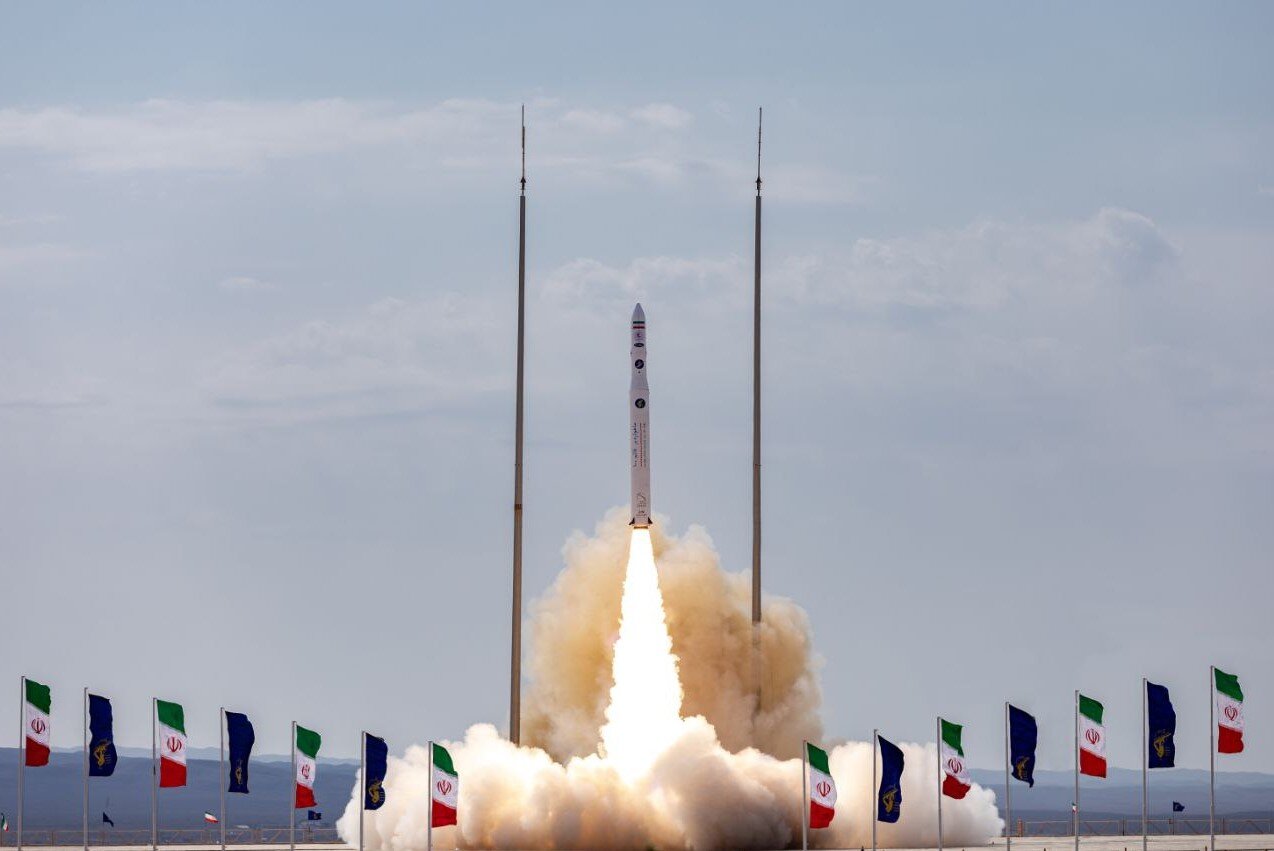Iran ushers in new era for space industry with launch of Chamran-1 microsatellite

TEHRAN – The head of the Chamran-1 satellite development team says the successful launch of Chamran-1 microsatellite marked a major breakthrough in Iran’s space sector.
Moharram Ghiyasvand shared details of the mission in an interview with Tasnim News Agency on Sunday.
He highlighted that Iran Electronics Industries, a key player in the country's space technology sector, has developed over 20 satellites of various sizes—ranging from nanosatellites to microsatellites and minisatellites—since the launch of the Omid satellite in 2009.
These satellites have been tasked with a range of missions, including imaging, telecommunications, positioning, and space research.
Chamran-1, named in honor of the late Mostafa Chamran, a renowned Iranian scientist and martyr, is a 60-kilogram microsatellite with a diameter of approximately 90 centimeters. The satellite is part of a series developed by Iran Electronics Industries.
According to Ghiyasvand, the satellite was developed in partnership with the Aerospace Research Institute under the Ministry of Science. Chamran-1’s primary mission is research-focused, aimed at demonstrating new technology related to orbit adjustments and maneuvering in space.
Ghiyasvand emphasized the importance of this technology demonstration, citing two key reasons. First, after a satellite is injected into orbit, it often requires adjustments to its initial trajectory based on its mission.
Second, for the development of satellite constellations, satellites must be transferred from their initial orbits to secondary or operational ones.
“To achieve these tasks, satellites need propulsion systems or thrusters. Chamran-1 is equipped with a domestically produced space thruster, developed by Iran’s knowledge-based sector. The successful demonstration of this technology in Chamran-1 is expected to pave the way for more advanced Iranian satellites in the future,” he noted.
Ghiyasvand also referred to Iran's 10-year space plan, which includes goals for managing space traffic through the in-orbit connection of space systems.
“This ambitious program requires advanced thrusters and flight dynamics subsystems capable of performing complex maneuvers, such as altitude changes, orbital phase shifts, and plane adjustments. Chamran-1, with its propulsion system and flight dynamics technology, represents an important first step toward achieving these capabilities,” he said.
The secondary mission of Chamran-1, Ghiyasvand explained, is to assess the performance and accuracy of its flight dynamics and propulsion subsystems for complex orbital maneuvers.
He noted that other key subsystems, such as power and energy management, central computing, and communications, were developed domestically. Their successful operation in Chamran-1 will increase the reliability of future operational satellites.
Ghiyasvand concluded by stating that the successful launch of Chamran-1 opens the door to a range of diverse space missions in the near future.
Leave a Comment